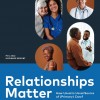Health Disparities & Social Determinants of Health (SDOH)
As patients enter the healthcare system, primary care is typically their first stop. Because of this, primary care clinicians have a unique opportunity to develop relationships with patients and communities. This also enables them to get a glimpse of the hardships that a particular patient or group of patients is dealing with and see how that can affect their overall well-being. As the healthcare system, and primary care in particular, shifts away from a transactional system, to one more focused on high quality, comprehensive care, these outside factors that often play a significant role in patients’ lives must be accounted for.
The CDC defines health disparities as preventable differences in the burden of disease, injury, violence or opportunities to achieve optimal health that are experienced by socially disadvantaged populations. It defines the social determinants of health as conditions in the places where people live, learn, work, and play. While several of these factors or locations fall out of the traditional sphere of primary care, a well-organized and coordinated primary care team should have the resources to help patients beyond their medical needs.
Resources
Toolkit for Teaching About Racism in the Context of Persistent Health and Healthcare Disparities | May 2017
UCLA Latino Policy and Politics Initiative | December 2017
The Development of an Indigenous Health Curriculum for Medical Students | May 2017
Mentoring Underrepresented Minority in Medicine (URMM) Students Across Racial, Ethnic and Institutional Differences | October 2018
How to Identify, Understand, and Unlearn Implicit Bias in Patient Care | July 2019
- ‹ previous
- 2 of 15
- next ›
News
November 15, 2022 | Primary Care Collaborative
August 2, 2022
April 26, 2022 | Penn Medicine News
- ‹ previous
- 2 of 47
- next ›
Events & Media
April 21, 2021 | Association of State and Territorial Health Officials
March 26, 2021 | Association of State and Territorial Health Officials
- ‹ previous
- 2 of 20
- next ›
Related Content
Pages
Pages
Pages
Secondary menu
Copyright © 2024 Primary Care Collaborative
















